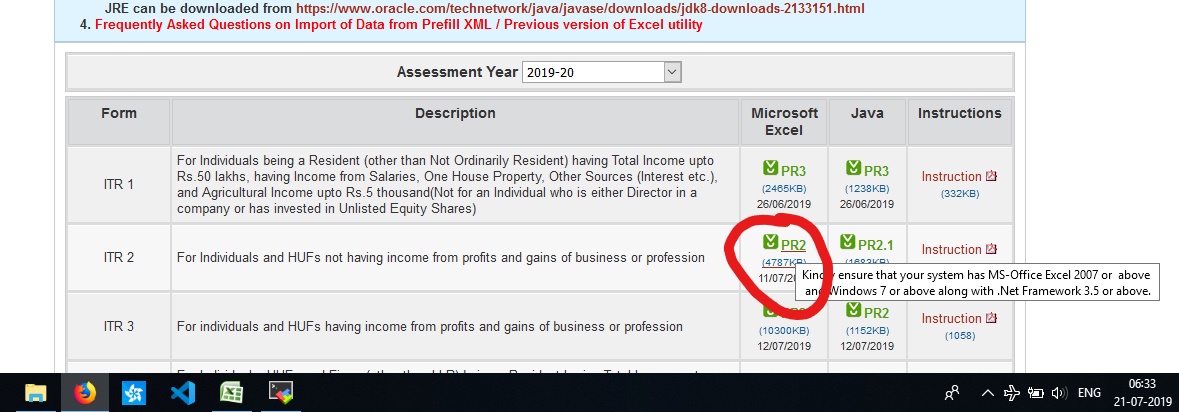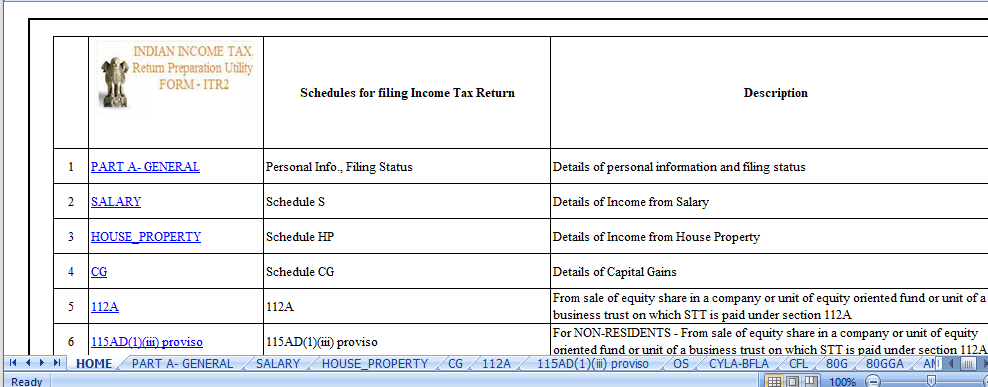A Guide to tax efiling for NRIs
24 Jul 2019 | personal, finance, taxI decided to self file the Income-tax returns to better understand the process, for this year. I was able to find a decent amount of information for the same concerning NRIs but almost no resources on how to do the filing itself. So I decided to write a guide myself to document my findings.
This guide focuses on a specific section of Non-Resident Indians (NRIs from here on) which do not own a house property and have not invested in mutual funds and equities in India (also applicable if they have not sold their stocks in the previous year to earn money). This is my first time filing the tax returns so this guide is going to be from the perspective of a newbie. I don’t try to be expansive in the guide but focus more on common topics that can help you to get started with your tax returns.
DISCLAIMER: This blog lists the step that I followed to submit my income tax returns. Please do not treat this as legal advice and contact a CA incase you are unsure about something.
Let’s start.
If you are filing the tax for the first time (or the first time as an NRI), please go through this FAQs first.
Since we are done with the newbies, we can start for real.
We first need to register ourselves on the below site using our PAN card details https://www.incometaxindiaefiling.gov.in/home.
NRIs are required to submit the ITR2 form. The site requires us to submit an XML corresponding to the ITR2 form which can either be generated using the excel utility or the java utility. We will use the excel utility for this guide. We will download the excel sheet from the downloads section of the site.
Here is a nontrivial vocab, when we are filing for the assessment year 2019-20 it relates to income earned in Financial Year 2018-19 (i.e. 1st April 2018 - 31st March 2019)

Filing the excel workbook
The excel workbook contains many sheets, each corresponding to taxes in different areas. We use the “Home” sheet to select the worksheets that we will use, we can remove the remaining sheets.

I will go over the important sheets one by one:
-
First, we will fill the “Part A General” sheet which contains personal details. Nothing special here all the details are straight forward. You are required to fill the number of days that you stayed in the last 4 years.
-
Salary: This contains information about the salary that we earned in India. For this we require the form 16 from the employer. NRIs who are not receiving any salary in India can skip this sheet.
-
House Property: This contains the information of the properties that you own and the rent that you are receiving on these properties if any. I didn’t explore this option.
-
Capital Gains(CG): This sheet corresponds to the equities and mutual funds that you own. You are also required to classify them as short/long term capital gains. This is the most complicated sheet in the entire workbook and I was lucky enough to have not dealt with equities in the previous financial year. If you had capital gains in the previous year then you are better off getting it done by a CA.
-
Other Sources (OS): In this sheet we need to fill the incomes that we recieve from other sources like interest on the savings bank and deposits with banks or post office. The interest income was the only important part for me. I recommend you to go through the entire section to find any other incomes sources that you might have.
-
80G and 80GGA: These sheets have the information for any donations that you made to Indian organizations.
-
VIA: This is the deductions under Chapter VI-A. These are the deductions that we can make from gross total income and avoid tax on those. Refer to Wikipedia for more details.
-
PARTB-TI-TTI: This sheet will be filled automatically with the data that we provided, we only need to add the bank account numbers that we have in India (including NRE, NRO, and savings).
-
TDS: We only need to fill this sheet if we have paid TDS on any of the income that we have mentioned in the form. In my case, I had paid TDS on the interest that I received in my HDFC NRO account. So we need to fill the information of the TAN of the deductor and the amount deducted which I was able to get from the HDFC bank in my case.
FAQs
Q. Are you really an NRI?
As per section 6 of the Income-tax Act, an individual is said to be non-resident in India if he is not a resident in India and an individual of Indian origin is deemed to be resident in India in any previous year if he satisfies the following conditions:
- If he is in India for a period of 182 days or more during the previous year;
Q. Do you need to pay taxes on your foreign income?
As an NRI you are not required to pay taxes on the income that you earn outside India.
Q. You are not paying tax on your foreign income, Do you need to disclose your foreign income during tax filing?
You don’t need to disclose your foreign income during tax filing. As a matter of fact you cannot mention your foreign income in the form.
Q. How does your resident country’s DTAA agreement effect you?
As an NRI you are only required to pay taxes (in India) on the income that you earn in India. But if your resident country also requires you to pay taxes on the income that you are earning in India then DTAA comes to your rescue. Since you are paying taxes on the same income, you can get tax relief to some extend depending upon the DTAA agreement that your resident country has signed with India.
Q. Do I need to file tax?
The tax department recommends everyone to file income tax returns. And being an NRI, in most cases you don’t need to pay any taxes that had been deducted as TDS from your savings accounts and FDs (as was in my case). You can get those back by filing the returns.